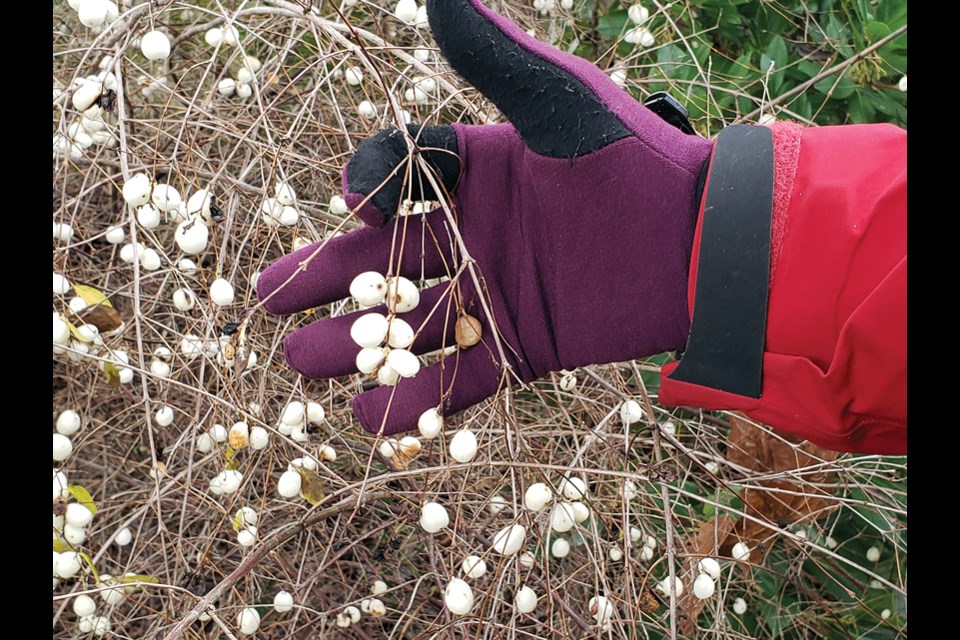Snowberry, a member of the honeysuckle family, is very showy right now, covered in waxy white berry-like drupes.
This West Coast native shrub has pink flowers that are very attractive to bees, hummingbirds and butterflies. It is a larval host plant for the Hummingbird Clearwing moth (Hemaris thysbe) and Vashti Sphinx (Sphinx Vashti), among others.
Although deciduous, it is dense enough to provide a safe place for small birds to rest and nest and the fruit provides food for robins, thrushes, towhees, waxwings and grosbeaks. Bushtits have been seen searching for insects in the rotting berries.
The fruit can cause stomach upset in humans, so probably is not the best choice for planting in small yards with young children around.
Commonly found in mountain and forest areas, it grows happily in dry sunny areas as well as many garden settings.
It is especially nice in front of evergreen shrubs, and the grey green leaves make a nice colour contrast with other summer greenery.
A good shrub for those tough areas under or near large evergreen trees, it spreads by rhizomes and is an excellent plant for erosion control, and a good choice for stream sides and riparian zones, however, it does need a well-drained situation.
It will grow to between three and five feet, generally, and can spread to become a thicket if allowed space. It is easy to start new plants from division.
It is a good choice for one of the toughest spaces, “dry shade” but can become aggressive and may need control over time.
It is a nice feature in the winter garden with its showy white fruit, especially when planted in sunnier areas where it will produce the most fruit.
I have read info that says it is deer resistant, and that it is food for bighorn sheep, white-tailed deer and grizzly bears.
I cannot vouch for deer resistance, but few gardens on the North Shore are at great risk of deer damage. I have one client who has had roses eaten twice during the summer, however! It will make a nice addition to floral arrangements.
There is also a variety with pink berries (Symphoricarpos orbiculatus) native to North America, and although not native to our region also acts as a larval host plant.
Heather Schamehorn is a certified residential landscape designer, educator, sustainability advocate and acupressure therapist. Contact via perennialpleasures.ca



